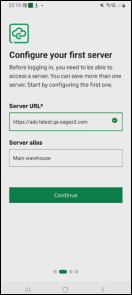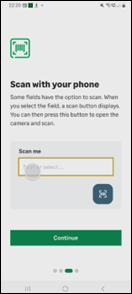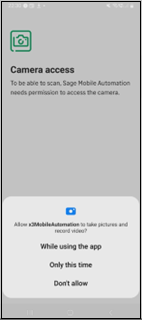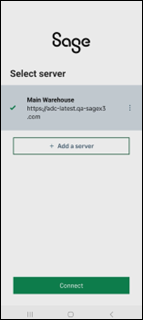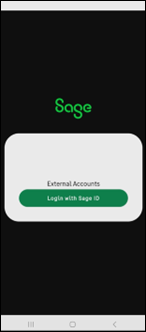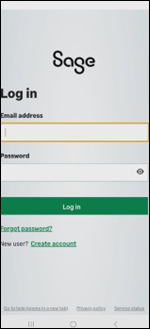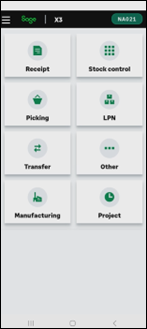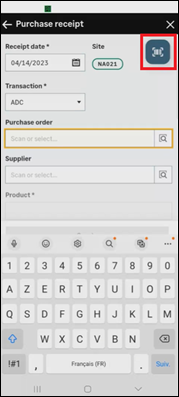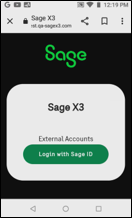
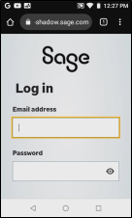
To configure Sage X3 Mobile Automation, you need to install Sage X3 Services. For further information, consult the Sage X3 Installation documentation.
Open the handheld page: https://loginUrl/handheld/
Example: https://syracuseserver:8124/handheld/


Note: This section is relevant only if you open the handheld application on a PC.
You need to size the screen correctly to replicate a width between 3.5 and 6 inches.
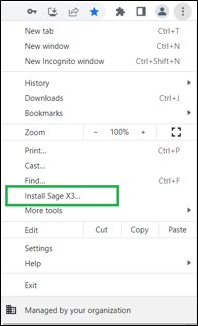

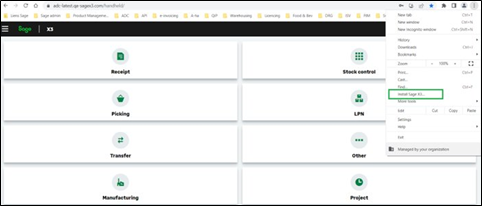
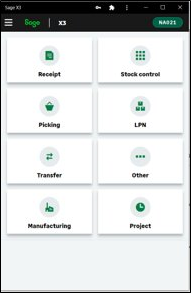

Chrome is the recommended browser for Sage X3 Services because the web view embedded in the web application uses Chrome for scanning and the camera.
Chrome is the only browser that works well if you use a scanner. You can use other browsers such as Edge for demo purposes as long as you do not use the scanner since it is not supported outside of Chrome (Settings and more > Applications > Install the site).
Note: Sage does not provide the devices.
The required operating system is Android version ≥ 8.0.
Screen size:
Scanner: 2D image scanning decoding both 2D (QR code, Datamatrix simple code) and 1D (barcode) codes. The browser required to connect to Sage X3 Services is Chrome version ≥ 45.
Types of codes
| Type of code | Symbology | Handheld scanner | Smartphone |
|---|---|---|---|
|
1D barcode - linear code (1 level)
|
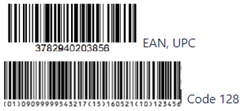 |
|

|
|
2D barcode:
|

|
 * *
|

|
|
2D barcode:
|

|
 * *
|

|
|
1D barcode - stacked (2 levels)
|

|
 * *
|

|
|
1D barcode - stacked (3 levels)
|

|
 * *
|

|
| 1D barcode - stacked (more than 3 levels) |

|

|
|
| RFID tag reading |
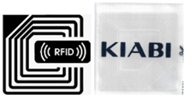
|
 * *
|

|
| NFC data capture |
 * *
|

|
 To be read
To be read Out of scope
Out of scope
*only if available in the device
capabilities
Composite code
| Type of code for composite code | Symbology | Handheld scanner | Smartphone |
|---|---|---|---|
|
1D barcode - linear code (1 level)
|
 |
|

|
|
2D barcode:
|
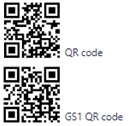
|
 * *
|

|
|
2D barcode:
|

|
 * *
|

|
 To be read
To be read Out of scope
Out of scope
*only if available in the device
capabilities
| Application identifier managed | Code | On the Mobile Automation purchase receipt |
|---|---|---|
|
GTIN - Global Trade Item Number |
01 |
The product is a reference field. You can use the GTIN code to search for a Sage X3 product. |
|
Expiration date |
17 | The expiration date is a date field. It can be a calculated date. The expiration date is 6 characters long. |
|
Batch or lot number |
10 | The lot number is a filter selection field. The lot field is 15 characters long. |
| Serial number | 21 | The serial number is a free numeric field. |
Select or scan the URL on first use and add it to the Home screen to easily access the web application login page the next time.
Transactions have been tested using:
For more information, consult the Zebra support documentation.
MC33 limitation: On the physical keyboard, it is possible to select the first letter but not the second and the third. To manage that, you need to scan or use the virtual keyboard.
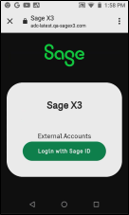

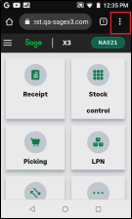
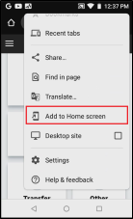

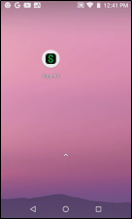
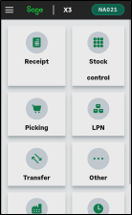
Note: Sage does not provide the devices.
Since release 2023 R1/V12.0.33, you can use Mobile Automation on smartphones, respecting the portable devices configuration described above.
Transactions have been tested using:
